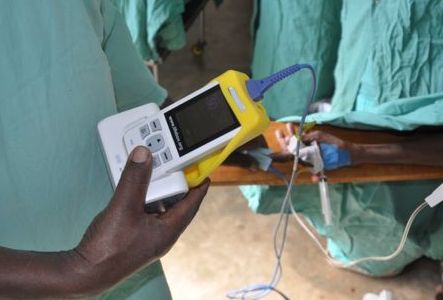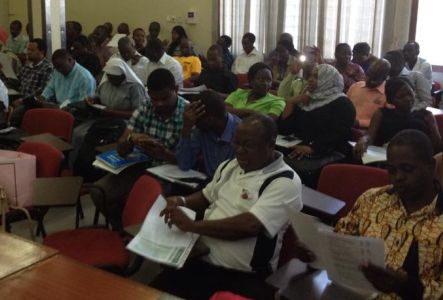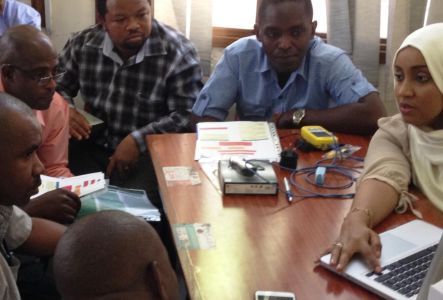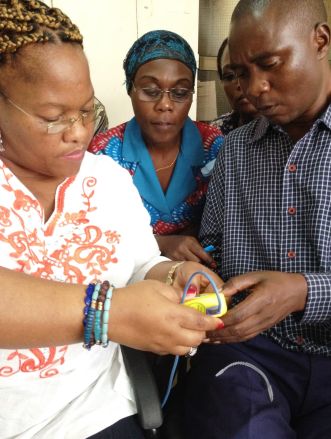Tanzania diary
We’re working with the Society of Anaesthesiologists of Tanzania (SATA), Life Support Foundation and the Ministry of Health and Social Welfare (MoHSW) to increase surgical safety for patients and anaesthesia providers in Tanzania.
Dr Bronwyn Rae, reports from the front line of the upcoming SATA Second Annual Scientific Conference from 21st to 22nd May.
Day One
I am getting ready to leave for the Lifebox training session with Dr Karima Khalid, a Tanzanian anaesthesiologist and close friend, who will be one of the trainers. There is a lot of roadwork in Dar es Salaam at present so we have to allow extra time to get to the hospital. Yesterday, Dr Tim Baker from Life Support Foundation and I joined the Tanzanians in a planning meeting run by Dr Vense who has been the local organizer here in Dar and planned our schedule and put together the training packets.
We are expecting 75 people from all over Tanzania. For me it has been worth travelling 8,000 miles to help with this training. I’ve been in so many operating rooms in Tanzania with minimal monitoring equipment, yet you hear a beep beep and there sitting on the anaesthesia machine or the bed is the little yellow Lifebox, doing its job faithfully and signalling that the patient is doing well.
Day Two
The training today was a great success. We were expecting 75 people – over a hundred came.
Dr Mpoki and Dr Vense and Dr Albert did a superb job of getting everything together. It was Dr Albert who had the foresight to remember that we needed to charge the pulse oximeters last night and saw to it that it was done. Dr Vense was the backbone of the day. A woman of extraordinary energy, she was everywhere at once, answering questions, handing out papers, handwriting the names on all the certificates of attendance in her beautiful cursive, and seeing that the destination of all the pulse oximeters was correctly recorded.
The day started with registration – we thought people would dribble in but there was already a good crowd by 8 am. We got started on time with the director of the Muhimbili Orthopedic Institute who is a neurosurgeon, welcoming everyone and saying how important good anaesthesia care is if Tanzanians are to enjoy the benefits of safe surgery.
Then Dr Mpoki, who serves as the President of the SATA, elegant as always in his immaculate grey suit, gave the plenary talk explaining the use of the surgical check list and the importance of anaesthesia education.
“More lives will be saved through safer surgeries, pulse oximetry plus the Surgical Safety Checklist, is the way to go!”
After that there was tea and a sandwich for the attendees. It was like the loaves and the fishes – miraculously there was enough for everyone despite the attendance being so much larger than we had expected. Then we divided into smaller groups for the workshops. Given the size of the crowd we had to scurry around for more space and Dr Karima rushed upstairs and begged one of the senior faculty to vacate his classroom so we could use it for the overflow. Fortunately he was gracious enough to agree.
I was the instructor for one of the groups and as always it was humbling to be amongst these anaesthesia providers. They work under such difficult conditions, struggling to do the best for their patients and all recognized how the pulse oximeter would make their jobs less stressful and their patients safer. I handed round some of the pulse oximeters which Dr Albert had gotten ready and we explored them together, making sure everyone understood how to put them together and use them. Many people, myself included had not previously realized that you could use AA batteries if the rechargeable battery was not working. One of the attendees gave a beautiful explanation of the oxygen dissociation curve using the analogy of flat ground and then a cliff which I plan to steal for my own use. Others brought up questions or gave examples and ideas from their own practice as we worked through the tutorials.
After the workshop we united as a group for the session on the use of the surgical checklist. Dr Vense gave a wonderful explanation as to why she thought it so important, using an example from her own experience. I wish it could have been taped; she so clearly spoke from the heart.
The day closed with Dr Mpoki taking the floor again to thank the attendees and instructors. Afterwards, reviewing the feedback forms, we found the most common complaint was that the training was too short. Many attendees recommended it be repeated again as soon as possible. We were all tired but delighted that the day had gone so well and all the hard work and months of preparation had paid off. Even better were the individual comments we got from the attendees, who told us how useful they had found the workshops and lectures and how much they had enjoyed the day.
The impression I shall take home is how eager people are to obtain and use saturation monitors. It is an incredibly cost effective tool that not only makes the patients much safer, but also makes the difficult job of the anaesthesia provider easier. Those of us who take safe anaesthesia for granted should recognize how lucky we are.





